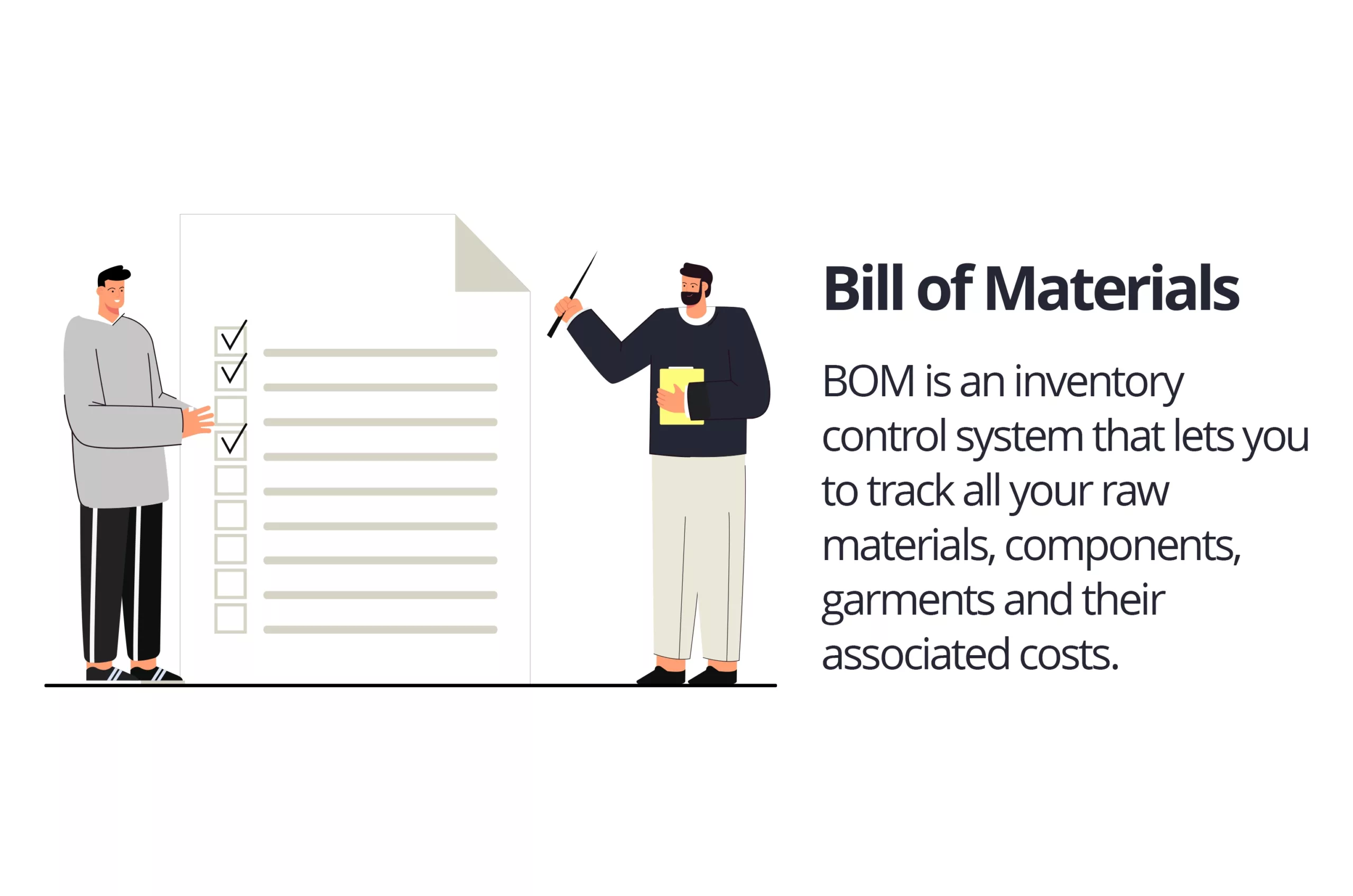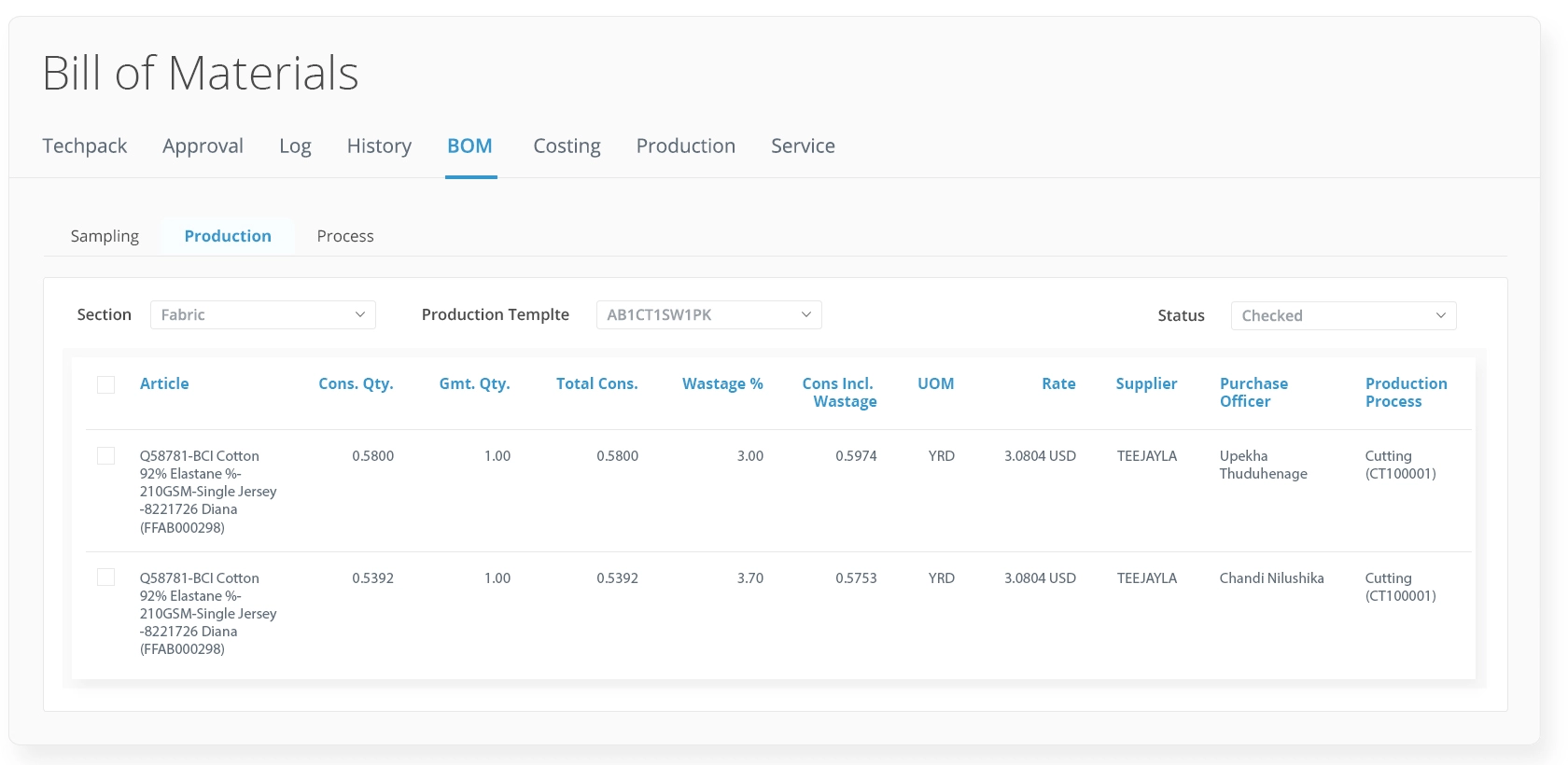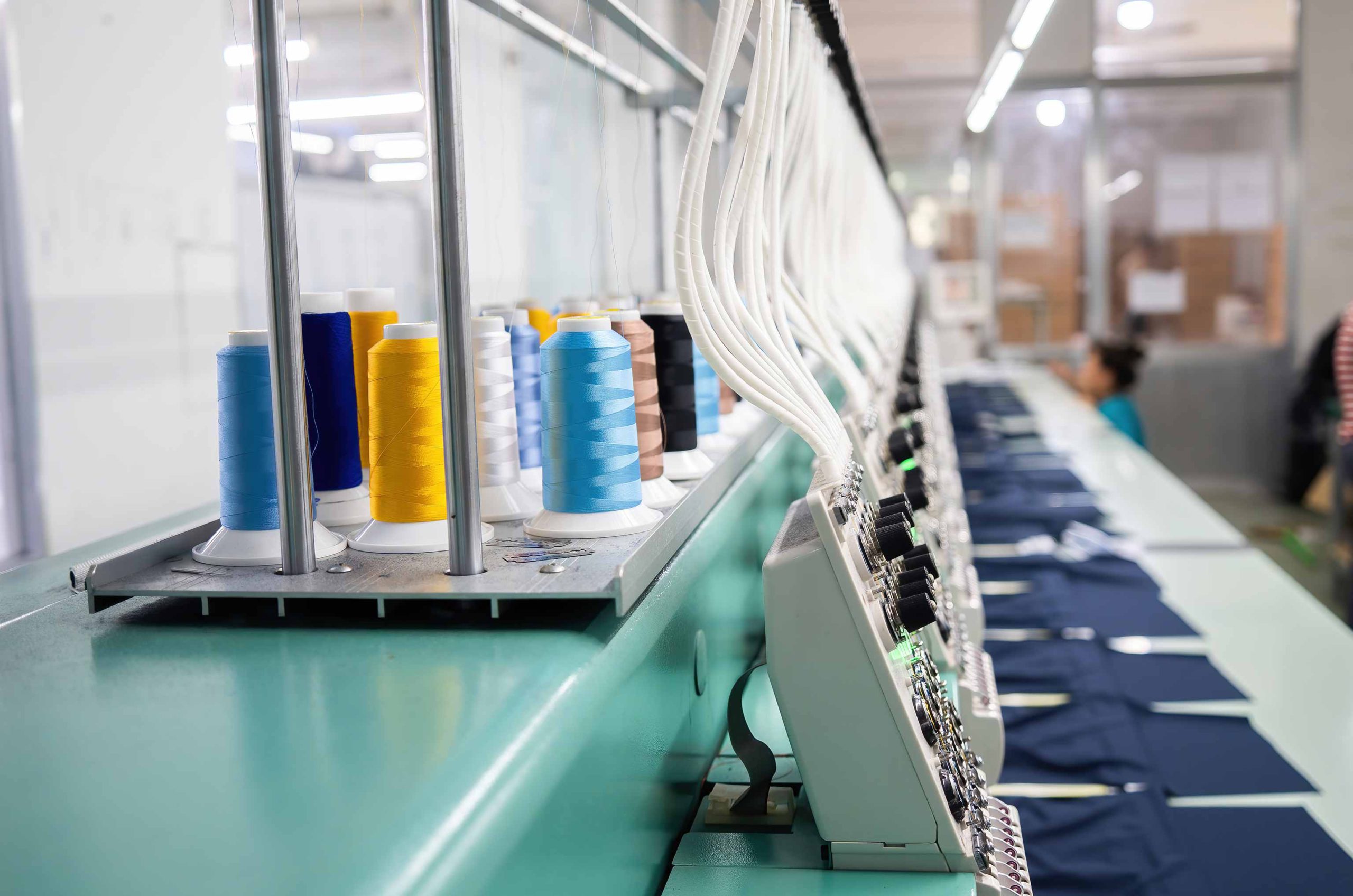The Ultimate Guide to Bill of Materials in Apparel Industry
-
Introduction
A Bill of Material is a basic tool that every apparel business should use to boost efficiency. The simplest way to explain it is as an inventory control system that allows you to track all your raw materials, components, garments and their associated costs. It can also serve as an important record when dealing with suppliers who might require it from you from time-to-time.
To start with, let’s take an apparel manufacturer as an example: Say you want to sell t-shirts and hoodies. You would need fabric for the shirts and hoodies which will be cut into multiple pieces (front, back etc.) Then there are buttons and zippers which are also manufactured by another company. All these materials come together at your factory where they are assembled into complete products like t-shirts or hoodies that are ready for shipping.
A Bill of Material tells you what materials are needed to make a product. It also tells you how many pieces of each material are required.
This article will cover everything you need to know about what a Bill of Material (BOM) is, why it’s so important for garment manufacturing businesses and how you can create one using WFX PLM!
-
What is Bill of Material (BOM) in garment industry?

A Bill of Material is a detailed list of all the materials, trims and their quantities that are required to make a product. It’s essentially an inventory list, but it serves far more functions than just keeping track of what materials need to be ordered or manufactured.
The BOM is used for tracking purposes and to ensure that the right quantity of materials is ordered for production, as well as for planning purposes. It helps you keep track of what components are being used in production and when they need reordering.
BOM also provides you with an understanding of how many pieces each component will go into during manufacturing, enabling you to calculate your estimated production costs early on. This enables you to make smarter decisions about which fabrics or materials should be used in your design so that they can be cost-effective while still maintaining their quality and style elements.
-
Why is a Bill of Material important for apparel businesses?

It is important to understand the four main reasons why a Bill of Material is so critical in the garment manufacturing process.
- Reduce time taken in production: A good BOM helps to reduce the time taken in production by identifying each item and its quantity. This allows you to manage your schedule better and get your product delivered on time, which is a huge advantage when compared with competitors who do not have good BOMs
- Reduce cost of production: If a company has a good BOM, it means that they can plan their budget better as they will know how much they need to spend on materials, components and labor required for each garment type. Also, if there are any changes made during the process, then the updated version will be available for all team members which eliminates any confusion about what needs to be done next.
- Reduce inventory of finished goods: A good BOM will help you to reduce your inventory of finished goods as it allows you to plan which items need to be produced first and then send them out to the market. This is especially useful if there are seasonal changes in demand and also when a product’s lifecycle comes to an end.
- Reduce waste: A good BOM will help you to reduce the amount of waste that is generated during the production process. If there are any changes made in the design, then only those items which need updating will be affected. This reduces the number of materials used and saves on costs.
-
Tips to make a good and accurate Garment BOM
If you are working on a garment product, here are some tips to help you make a good BOM:
- Keep it simple. Make sure to use the same terminology across the business. This way, everyone will understand what is being talked about when someone mentions a tag or pocket.
- Use consistent naming convention while assigning names to individual components in BOMs. For example, if you have decided to use a 2-digit numbering system (01, 02 etc) consistently throughout your business then do that for all components as well.
- Use standard abbreviations wherever possible. For example, if you use ‘AP’ for Assembly Process (i.e., assembly line) then don’t ever change it to something else like ‘AC’ or ‘AS’!
- Use a consistent format. To do this, create an outline or table which has rows and columns representing each component and its attributes such as size or color code.
- Make sure that it’s easy to read and understand. Ensure that whoever needs to use the BOM can understand any information on it without having to ask questions or spend too much time trying to figure out what something means by referencing other documents or notes.
- Make sure it’s easy to update. Having an easy way to update data automatically makes things easier overall and allows you to be flexible when changes come up.
-
Benefits of using WFX to create and manage BOMs
By using WFX PLM’s in-built module to create and manage BOMs, you can:
- Remove the need for manual preparation and management of BOMs which saves time, money and human errors
- Share BOMs directly with your factory through the system, which means that they can continue working on the data even when your team is unavailable.
- Easily access information about each component in your finished garment
- Create accurate BOMs from scratch or update existing ones with just a few clicks
- Tracks any changes made to BOMs automatically so it’s easy to identify discrepancies or missing information
- View and manage BOMs within a range of different contexts, such as by product type or category
- Make it easy for your team to access all relevant information about each component in the garment at the same time
-
Conclusion
Bill of Material is an important tool in the apparel industry. It helps businesses manage their inventory and better understand what components go into making a product. With this knowledge, they can make better decisions about how to produce items that are more environmentally conscious or more cost-effective for their customers.










